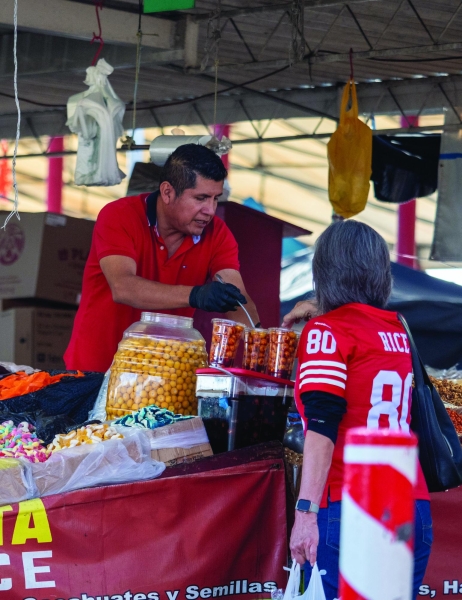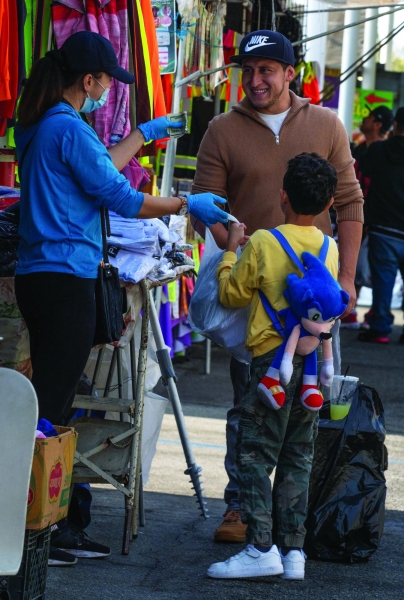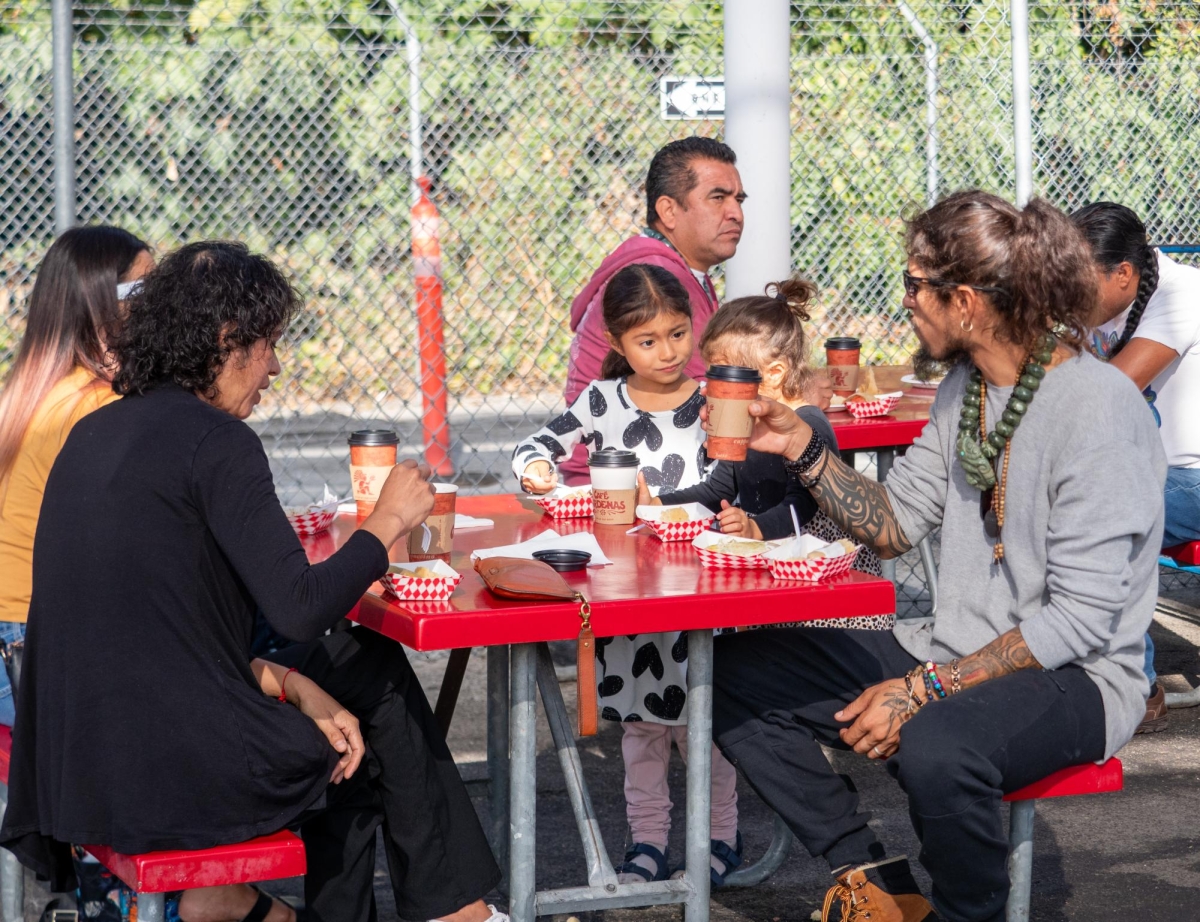Walking along the canopied entrance into San Jose’s Flea Market, located at 1590 Berryessa Road, on a lively Sunday is an experience in and of itself. Live music plays, fruit prices are shared and the shuffle of all the people wandering from booth to booth can be heard.
The San Jose Flea Berryessa Market is where many Bay Area locals go to shop. From fresh produce to skin care to second hand items, the flea market has something for everyone.
While many locals hold the flea market dear in their hearts, the memories made there are tainted by the looming threat of redevelopment. The market’s current location is soon to become a transit-oriented development near the Bay Area Rapid Transit train station with plans to have 3,500 homes and 3.4 million square feet of mixed space, according to the San Jose Spotlight. This threatens the livelihood of many vendors.
The San Jose Flea Market first opened in 1960 and now takes up 65 acres filled with vendor stands and buildings of its own. Like a small town, rows of stalls are labeled with street names. According to the San Jose Berryessa Flea Market economic and cultural impact analysis report, “the Berryessa Flea Market represents the largest, densest cluster of small and microbusinesses in the South Bay.”
With a grid-like map, vendors pay per lot space — $35 to $65 on Saturdays, $40 to $80 on Sundays, and free on Wednesdays, Thursdays and Fridays — to sell their new and used items like clothing, furniture and toys, as well as food.
Nancy Torres’ stall sells packaged spices and herbal remedies. She is one of many vendors whose families have been at the flea market for generations.
“I pretty much grew up here since I was nine,” Torres said.
Torres has seen a negative impact on her sales since the arrival of surrounding establishments like the BART Station and apartment complexes.
“Recently, with all the things that they [the city of San Jose] want to do, our sales went down a lot,” Torres said. “We [her and her family] had five stands, and now we only have one.”
Many vendors have been looking to relocate themselves, with knowledge of the incoming closure, but can’t seem to find an equivalent alternative.

“This was our biggest place where we got most of our income from. It [moving to another market] is not the same. It’s completely different,” Torres said. “[Other markets are] a little bit more expensive. Some of them are cheaper, but it’s not as good as we have been here.”
Many vendors like Torres and her family are waiting to see if they receive any more information from the San Jose Flea Market owners.
“For now, we’re just kind of waiting to see if they have a plan for us, or if they have another location that we can move to,” Torres said.
Torres isn’t the only vendor anxious about the future. Giobani Garcia works as a produce vendor, helping run his father’s business at the flea market. Garcia’s family has been at the same stand for about 25 years. For generations, he and his family have run the produce stand and currently, he and his siblings are taking over the business. After being notified about the potential closing, Garcia started to worry about his father’s income.
“It is tragic news to him, because he’s always been here his whole life,” Garcia said. “We [me and my siblings] are already old enough to get other jobs … but he has been here his whole life.”
According to a San Jose Berryessa Flea Market economic and cultural impact analysis report, “Vendors have reported buying a house and sending their kids to college indicating that they were able to transfer wealth from La Pulga [Flea Market] businesses to the next generation and offer them greater economic opportunities.”
It also states that “Nearly all the vendors represent lower-income communities of color, half of the vendors work full-time at the Market and nearly three-quarters rely on the Berryessa Flea Market as their primary source of income.”
San Jose District 4 Council member David Cohen has given an earliest possible closing date of Jan. 1, 2026. Even though this date is more than a year out, many vendors and shoppers are worried about what will happen to this focal point of the community.

A flea market employee, who asked not to be named and has worked at the Flea Market since March 27, 1999, has also seen the impact that the talk of the closure has had on the vendors and shoppers.
“Those few vendors that have been here for so long are the ones that got to be affected the most because this has been basically their main source of income,” the employee said. “There’s a few of them that have been here even longer than me … it has been their whole life. It’s harder for them to accept the fact that things are just gonna change.”
The employee is not confident that the city and the flea market owners will find as prime a location as the current one.
“Where else in San Jose you’re gonna find an open space that is as big as this?” The employee said. “This [the flea market land] is one of the last private properties that is still large enough to create a flea market. I don’t think the actual family that owns the flea market is actively looking for something [another space].”
Locals feel the Flea Market represents the community very well. Jorge Cruz, a regular at the flea market since he was a kid, feels that it is a place he can go that reflects his culture.
“It’s very how do you say, mi gente [my people]; a lot of Hispanic community,” Cruz said.



![MEANINGFUL MARKET — A vase seller looks off into the distance at the San Jose Flea Market. “It [the announcement of the closure] really had a big impact on us,” vendor Nancy Torres said.](https://verdemagazine.com/wp-content/uploads/2024/11/looking_away_vupload-e1732389750235-1045x1200.jpg)
